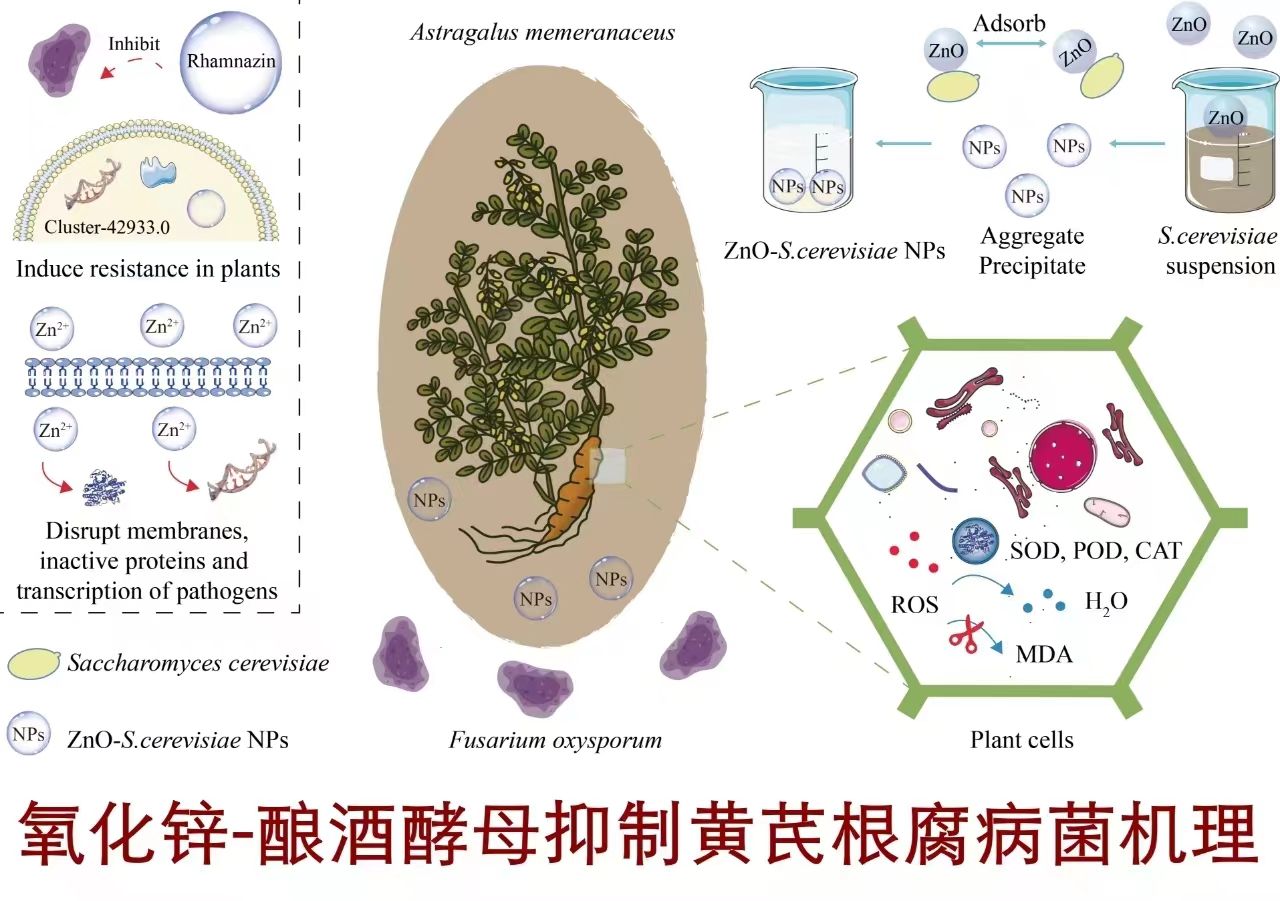A research team led by Professor Gao Wenyuan from the School of Pharmaceutical Science and Technology (SPST), Faculty of medicine, at Tianjin University has recently developed a novel bio-fungicide to combat root rot disease in Astragalus membranaceus, commonly known as Huangqi or Astragalus root. This bio-fungicide not only suppresses root rot disease but also promotes the growth metabolism of A.membranaceus . The related findings have been published in the prestigious international journal "Chemical Engineering Journal".
A.membranaceus, renowned for its tonic properties, has been hailed as a superior medicinal herb in ancient Chinese medicine work "Compendium of Materia Medica," also known as "Bencao Gangmu". Modern medical research indicates that A.membranaceus contains effective components such as triterpenoid saponins and flavonoids, as well as various amino acids, folates, and other trace elements. It is known for its efficacy in replenishing vital energy, reinforcing the exterior, arresting sweating, promoting diuresis, and reducing swelling. A.membranaceus is one of the most important medicinal herbs in the northwest Chinese medicinal material industry, contributing significantly to income generation for farmers in provinces such as Gansu, Inner Mongolia, Qinghai, Ningxia, and Xinjiang.

On September 2023, professor Gao led the team to conduct reaserch on novel bio-fungicide
Root rot disease, often referred to as "plant cancer," poses a significant threat to A.membranaceus cultivation. It is a common disease in Chinese medicinal herb planting areas, caused by a complex of pathogenic fungi. Studies have shown that in poorly drained low-lying areas, the incidence of root rot disease in A.membranaceus ranges from 32% to 41%, with severe cases reaching up to 55%. Root rot disease has become a major bottleneck restricting the development of China's A.membranaceus industry. Challenges such as the lengthy breeding cycle and the significant environmental and human health hazards associated with using traditional chemical pesticides have prompted the urgent need for environmentally friendly and cost-effective root rot disease control technologies to ensure the high-quality development of the A.membranaceus industry in China.

The novel bio-fungicide to combat root rot disease in Astragalus membranaceus
As part of the National Chinese Medicinal Material Industry Technology System, Professor Gao Wenyuan's team at Tianjin University has developed a novel bio-fungicide targeting root rot disease in A.membranaceus. This bio-fungicide not only acts as an antifungal agent to suppress root rot disease but also stimulates the growth metabolism of Astragalus. Mechanistic studies have revealed that this novel bio-fungicide exerts its antifungal effect by inhibiting the growth genes of Fusarium oxysporum, stimulating the production of antifungal compounds in A.membranaceus, and activating A.membranaceus resistance genes. It holds great potential as an alternative to traditional pesticides and has enormous applications in plant protection.
"Our novel bio-fungicide is comparable in efficacy to currently available pesticides but at a lower cost and with greater environmental friendliness," said Associate Professor Wang Juan, a key member of the team. "Next, we will further optimize the cost and plan to collaborate with A.membranaceus bases in Dangchang County, Gansu Province, supported by Tianjin University, to assess the demonstration effect and achieve widespread application."
This breakthrough by Tianjin University not only addresses a critical challenge in Astragalus cultivation but also demonstrates the power of scientific innovation in advancing sustainable agriculture. It holds promise for the future development of China's agricultural technology innovation system and contributes to the enhancement of farmers' livelihoods through improved crop yield and quality.
By: Qin Mian






